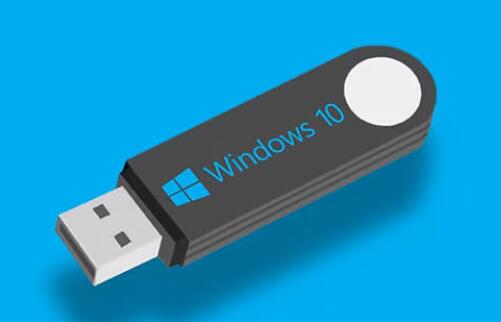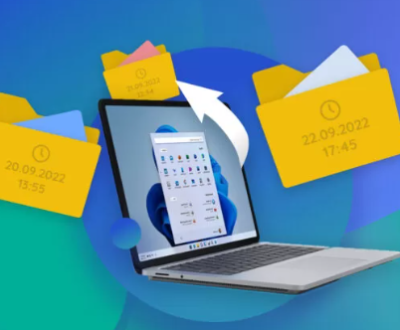Creating a USB boot disk for Windows 10 is a practical way to install or repair the operating system on your computer. This guide will walk you through the process in detail, covering all the necessary steps and considerations to ensure a successful setup.
1. Purpose of a USB Boot Disk
A USB boot disk, also known as a bootable USB drive, is a portable storage device that can be used to boot a computer and perform tasks such as installing or repairing an operating system. In this case, we’re focusing on creating a bootable USB drive for Windows 10. which allows you to install or troubleshoot Windows 10 without needing a CD/DVD drive.
2. Gather the Required Materials
Before you start, ensure you have the following:
A USB Flash Drive: You will need a USB flash drive with a minimum of 8 GB of storage space. For best results, use a USB 3.0 drive, which offers faster data transfer speeds.
A Windows 10 ISO File: This is the disk image file of Windows 10 that you will use to create the bootable USB drive. You can download this from the Microsoft website.
A Computer with Windows Operating System: You’ll need a working computer to prepare the bootable USB drive.
Rufus or the Windows Media Creation Tool: These are tools used to create the bootable USB drive. Rufus is a popular, lightweight utility, while the Media Creation Tool is provided by Microsoft.

3. Using the Windows Media Creation Tool
The Windows Media Creation Tool simplifies the process of creating a bootable USB drive. Follow these steps:
Download the Windows Media Creation Tool:
Go to the Microsoft Download Page.
Click on the “Download tool now” button to get the Media Creation Tool.
Run the Media Creation Tool:
Open the downloaded file to launch the Media Creation Tool.
Accept the license terms when prompted.
Choose Your Action:
Select the option “Create installation media (USB flash drive, DVD, or ISO file) for another PC” and click “Next.”
Select Language, Edition, and Architecture:
Choose your preferred language, edition of Windows 10. and architecture (64-bit or 32-bit). Click “Next.”
Choose the USB Flash Drive Option:
Select “USB flash drive” and click “Next.”
Make sure your USB flash drive is connected and select it from the list. Click “Next” to start the download and creation process.
Complete the Process:
The tool will download the Windows 10 files and write them to the USB flash drive. This process may take some time depending on your internet speed and USB drive performance.
Once the process is complete, you will have a bootable USB drive ready for use.
4. Using Rufus to Create a Bootable USB Drive
Rufus is a versatile tool for creating bootable USB drives. If you prefer using Rufus or if you already have a Windows 10 ISO file, follow these steps:
Download Rufus:
Visit the Rufus official website and download the latest version of the tool.
Run Rufus:
Open the Rufus executable file to launch the application. No installation is required.
Insert Your USB Flash Drive:
Plug your USB flash drive into the computer. Rufus should detect it automatically.
Select the ISO File:
In Rufus, under “Device,” choose your USB flash drive.
Click the “Select” button next to “Boot selection” and browse to the location of your Windows 10 ISO file. Select the ISO file and click “Open.”
Configure Rufus Settings:
Ensure the Partition scheme is set to “GPT” for UEFI systems or “MBR” for BIOS systems. Most modern systems use GPT, but you should check your system’s requirements.
File system should be set to “NTFS.”
Leave other settings at their default values unless you have specific requirements.
Create the Bootable USB:
Click the “Start” button to begin the process.
You may receive a warning that all data on the USB drive will be erased. Confirm that you want to proceed.
Complete the Process:
Rufus will format the USB drive and copy the Windows 10 files to it. This may take several minutes.
Once completed, you will have a bootable USB drive ready to use.
5. Booting from the USB Drive
To use your newly created bootable USB drive, follow these steps:
Insert the USB Drive:
Plug the USB drive into the computer where you want to install or repair Windows 10.
Access the BIOS/UEFI Settings:
Restart the computer and enter the BIOS/UEFI settings. This is typically done by pressing a key such as F2. F12. Delete, or Esc during startup. Check your computer’s manual for the specific key.
Set the USB Drive as the Primary Boot Device:
In the BIOS/UEFI settings, navigate to the boot menu and set the USB drive as the primary boot device. Save your changes and exit.
Boot from the USB Drive:
The computer should now boot from the USB drive. You will see the Windows 10 installation screen or recovery options.
6. Installing or Repairing Windows 10
Once you’ve booted from the USB drive, you can proceed with the installation or repair of Windows 10:
For Installation:
Follow the on-screen instructions to install Windows 10. You’ll need to choose the installation language, time, and keyboard preferences, and then select “Install now.”
Enter your product key if prompted (you can also choose to do this later).
Select the installation type (Upgrade or Custom). For a clean installation, choose “Custom” and select the partition where you want to install Windows 10.
For Repair:
If you’re using the USB drive for repair purposes, select “Repair your computer” from the initial setup screen.
You’ll have options for troubleshooting, including system restore, command prompt, and startup repair.
7. Troubleshooting Common Issues
USB Drive Not Booting:
Ensure the USB drive is properly formatted and the ISO file was correctly written.
Check that the BIOS/UEFI settings are configured to boot from USB.
Try using a different USB port or a different USB drive if issues persist.
Windows 10 Installation Errors:
Verify that the ISO file is not corrupted. Re-download it from the official Microsoft site if necessary.
Ensure that your system meets the hardware requirements for Windows 10.
About us and this blog
Panda Assistant is built on the latest data recovery algorithms, ensuring that no file is too damaged, too lost, or too corrupted to be recovered.
Request a free quote
We believe that data recovery shouldn’t be a daunting task. That’s why we’ve designed Panda Assistant to be as easy to use as it is powerful. With a few clicks, you can initiate a scan, preview recoverable files, and restore your data all within a matter of minutes.
Subscribe to our newsletter!
More from our blog
See all postsRecent Posts
- How to restore deleted images 2025-06-30
- How to restore a deleted file on windows 2025-06-30
- is there any way to restore deleted photos 2025-06-30

 Try lt Free
Try lt Free Recovery success rate of up to
Recovery success rate of up to









